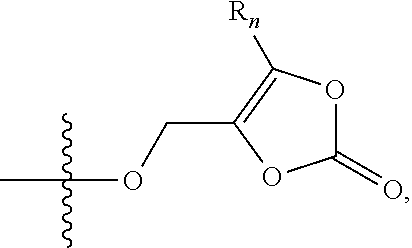Synthesis for thiazolidinedione compounds
a thiazolidinedione and compound technology, applied in the field of thiazolidinedione compound synthesis, can solve the problems of sodium reabsorption and other unpleasant side effects, and achieve the effects of reducing binding and activation of the nuclear transcription factor ppar, reducing the cost of starting materials and process conditions, and being safer and/or less costly
- Summary
- Abstract
- Description
- Claims
- Application Information
AI Technical Summary
Benefits of technology
Problems solved by technology
Method used
Image
Examples
example 1
Preparation of 5-{4-[2-(3-methoxyphenyl)-2-oxoethoxy]benzyl}-1,3-thiazolidine-2,4-dione
[0264]
[0265]To a stirring solution of 5-(4-hydroxybenzyl)thiazolidine-2,4-dione (100 mg, 0.4 mmol) in DMSO (2 ml), potassium tert-butoxide (106 mg, 0.941 mmol) was added. Stirring continued at RT for about 1 hour. 2-Bromo-3′-methoxyacetophenone (100 mg, 0.5 mmol) was then added to the mixture. After 2 hours, LCMS showed that the reaction was complete. The reaction mixture was partitioned between EtOAc and water, and the aqueous phase was extracted with EtOAc. Combined extracts were washed with brine, dried on (Na2SO4), filtered, and evaporated in vacuo. The residue was analyzed on a small RediSep column eluting with 0-10% acetone / DCM. Fractions containing the product were combined and evaporated in vacuo to afford 70 mg of 5-{4-[2-(3-methoxyphenyl)-2-oxoethoxy]benzyl}-1,3-thiazolidine-2,4-dione as a pale yellow solid.
[0266]
TestResultsPhysical AppearancePale yellow solid.1H NMR Spectrumδ 12.03 (s, ...
example 2
Preparation of 2-(4-(hydroxymethyl)phenoxy)-1-(3-methoxyphenyl)ethanone
[0267]
[0268]To a stirring solution of 2-bromo-3′-methoxyacetophenone (3.00 g, 13.1 mmol; Supplier=Kalexsyn; Lot=803-TTP-145) in acetone (30 ml) was added 4-hydroxybenzylalcohol (1.69 g, 13.6 mmol) and potassium carbonate (1.88 g, 13.6 mmol). The resulting mixture was stirred at RT overnight. The reaction mixture was partitioned between water and EtOAc, and the aqueous phase was extracted with EtOAc. The combined organic phases were washed with brine, dried (Na2SO4), filtered and evaporated in vacuo. The product was analyzed on a large Biotage column eluting with 50% EtOAc / hexanes. Fractions containing product were combined and evaporated in vacuo to give 2.98 g of the title compound as a white solid.
[0269]
TestResultsPhysical AppearanceWhite solid.1H NMR Spectrumδ 7.58 (d, J = 7.7 Hz, 1H), 7.53 (m, 1H), 7.42(400 MHz, CDCl3)(t, J = 7.9 Hz, 1H), 7.29 (m, 2H), 7.17 (dd, J = 8.3, 1.7 Hz, 1H), 6.93 (d, J = 8.7 Hz, 2H),...
example 3
Assays
[0270]Assays for Measuring Reduced PPARγ Receptor Activation
[0271]Whereas activation of the PPARγ receptor is generally believed to be a selection criteria to select for molecules that may have anti-diabetic and insulin sensitizing pharmacology, this invention finds that activation of this receptor should be a negative selection criterion. Molecules will be chosen from this chemical space because they have reduced, not just selective, activation of PPARγ. The optimal compounds have at least a 10-fold reduced potency as compared to pioglitazone and less than 50% of the full activation produced by rosiglitazone in assays conducted in vitro for transactivation of the PPARγ receptor. The assays are conducted by first evaluation of the direct interactions of the molecules with the ligand binding domain of PPARγ. This can be performed with a commercial interaction kit that measures the direct interaction by florescence using rosiglitazone as a positive control. Further assays can be...
PUM
| Property | Measurement | Unit |
|---|---|---|
| temperature | aaaaa | aaaaa |
| affinity | aaaaa | aaaaa |
| aliphatic | aaaaa | aaaaa |
Abstract
Description
Claims
Application Information
 Login to View More
Login to View More - R&D
- Intellectual Property
- Life Sciences
- Materials
- Tech Scout
- Unparalleled Data Quality
- Higher Quality Content
- 60% Fewer Hallucinations
Browse by: Latest US Patents, China's latest patents, Technical Efficacy Thesaurus, Application Domain, Technology Topic, Popular Technical Reports.
© 2025 PatSnap. All rights reserved.Legal|Privacy policy|Modern Slavery Act Transparency Statement|Sitemap|About US| Contact US: help@patsnap.com



